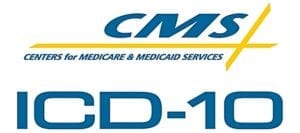The transition to ICD-10 is coming. Are you prepared for it? As of October, 1 2015, health care providers must switch the ICD-10 code set. If you fail to do so, claims that are filed using ICD-9 codes will likely be denied.
The transition to ICD-10 is complicated and potential costly, causing it to be delayed multiple times. But, with no further delays expected, the time has come to commit to the transition. In fact it’s imperative to do so, as the industry is getting a proverbial “shove” in the back by the Centers for Medicare and Medicaid Services (CMS).
The good news is that CMS has put together a list of steps that health care providers can take to make the ICD-10 transition a little less frightening.
ICD-10 Checklist
- Identify current systems and processes that involve ICD-9 codes, such as clinical documentation, superbills, practice management systems, and electronic health record systems, etc.
- Talk about accommodations for ICD-10 codes with your practice management system vendor. Confirm that your system has been upgraded to Version 5010 standards, which have been required since January 2012.
- If you are currently shopping for a new practice management system, be sure to confirm that it is ICD-10 ready.
- Ensure a smooth transition by discussing your plans for implementation with payers, billing services and clearinghouses.
- Speak with payers about how contracts could be affected by ICD-10 implementation.
- Think about possible ways your staff’s workflow and processes might change.
- Be sure to identify and address all of your training needs.
- Prepare for the potential of unforeseen budgetary considerations, including system changes, software updates, and the extra time staff might need to train and adapt to the implementation.
- Make your practice’s appointment schedule during the last week of September and the first week of October a little lighter than normal. This will help your staff adjust without being overloaded.
Consider a trial run. There’s concern that coder productivity will wane once ICD-10 coding is underway, due to a higher code volume. So, doing some ahead of time as practice could help coders feel more comfortable before heading into October. While dual coding, as it’s referred to, may occupy extra time in the short term, a better prepared coder will make the transition a little smoother.

